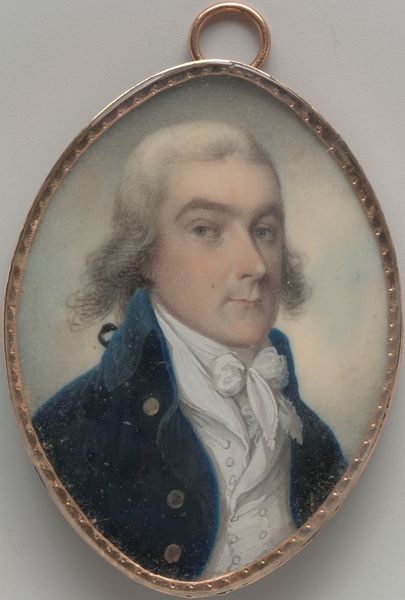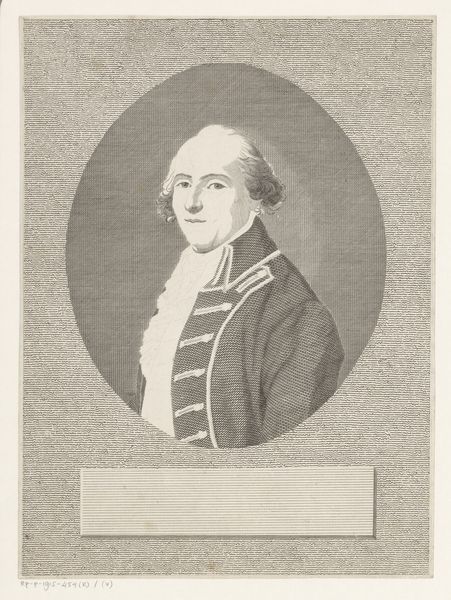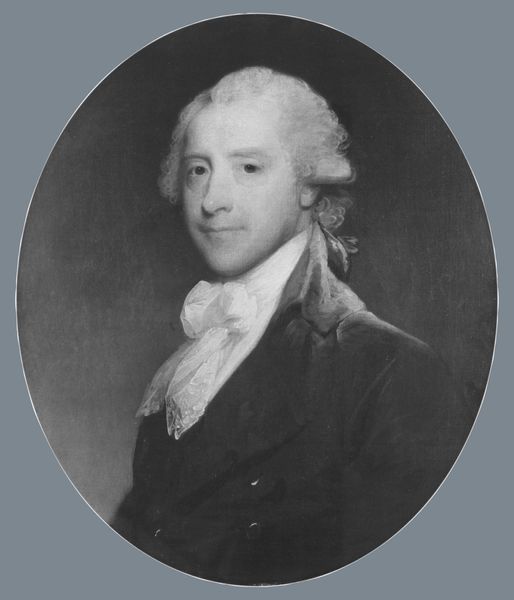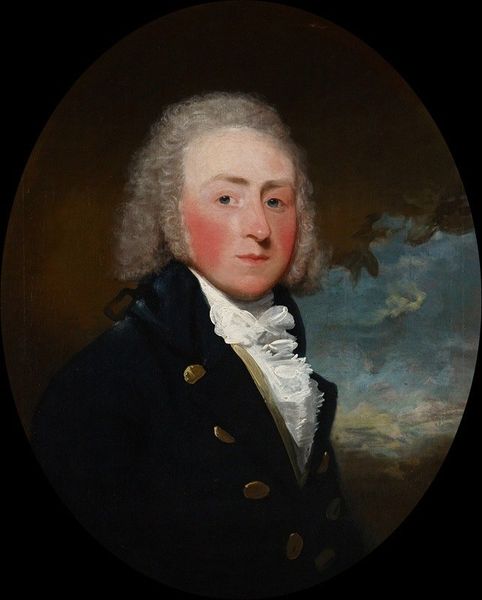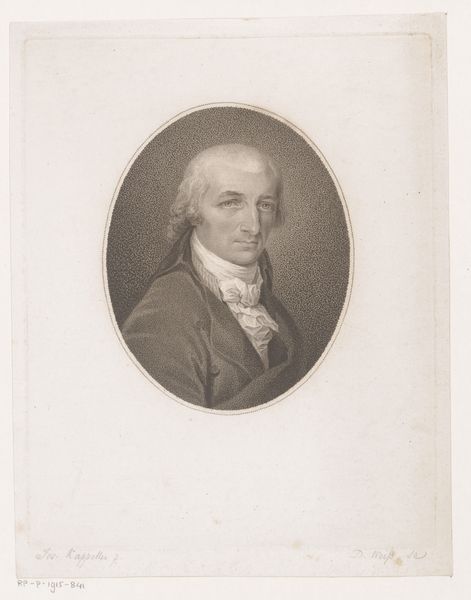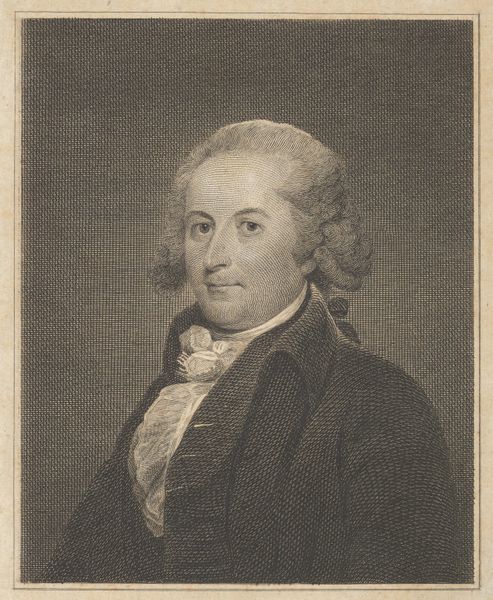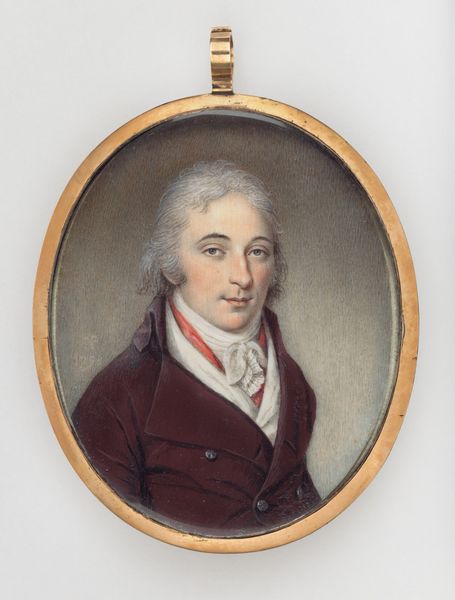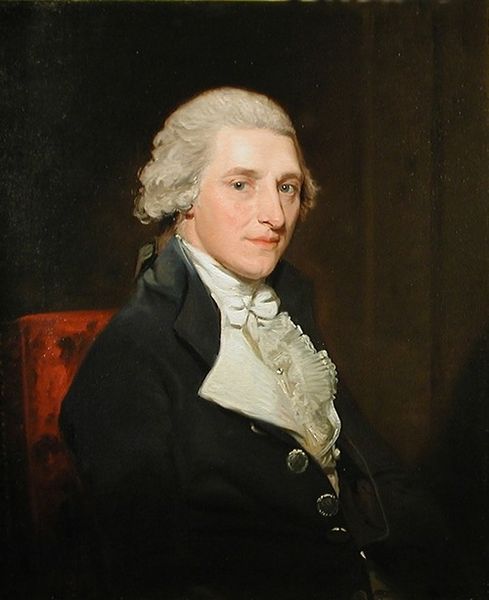
drawing, paper, pencil
#
portrait
#
drawing
#
paper
#
romanticism
#
pencil
Dimensions: image (oval): 22 x 18.9 cm (8 11/16 x 7 7/16 in.) sheet: 24 x 19.8 cm (9 7/16 x 7 13/16 in.)
Copyright: National Gallery of Art: CC0 1.0
Curator: We're looking at John Downman's "George Mills," created in 1792. It's rendered in pencil on paper. Editor: It exudes a certain quiet dignity. The circular composition immediately draws my eye to the figure, but there is a melancholy conveyed in the overall muted tonality. Curator: Precisely. Downman's skill is evident in the subtle modeling of the face and the economy of line used to suggest the details of the clothing. Consider how the gold buttons, carefully depicted, draw the eye and play against the surrounding shadows of the jacket. Editor: Absolutely, the deliberate attention to details such as those buttons suggests an engagement with a culture of excess even while paper itself, readily produced and widely distributed in the 1790s, offered greater availability of the arts across social strata. Think, also, about the availability and deployment of the pencil, a relatively recent innovation. How might these aspects change the reception of portraiture at this time? Curator: It certainly alters the calculus of production and reception. We're in a transition away from the Grand Manner portraiture. Downman subtly alters that equation. Observe, for instance, the loose rendering of the sitter's hair, a quality that evokes the stylistic freedom and expression found within Romanticism. It pulls us from the overly polished, aristocratic image. Editor: I am compelled by the labor. This isn't merely a quick sketch but evidence of meticulous rendering to provide accurate likeness. Paper allows for edits, yet it demands that those edits be made delicately. We might want to understand what those means of distribution afford access to people, or classes, who did not traditionally have it. Curator: An interesting consideration of the object's journey and reception in context of accessibility through distribution and materials! The interplay between detail and elision creates a sense of idealized yet individualized observation. Editor: By foregrounding production of images as central to a world becoming ever more democratic, and attentive to production and reception, this drawing becomes an act of translation rather than merely reflection. Curator: Ultimately, a fascinating convergence of individual likeness and evolving cultural ideals is brought to the forefront, compelling the viewer toward nuanced conclusions about Romantic portraiture. Editor: Indeed. I leave intrigued by its silent testament to art's means of democratization and the stories its materiality hints at.
Comments
No comments
Be the first to comment and join the conversation on the ultimate creative platform.
